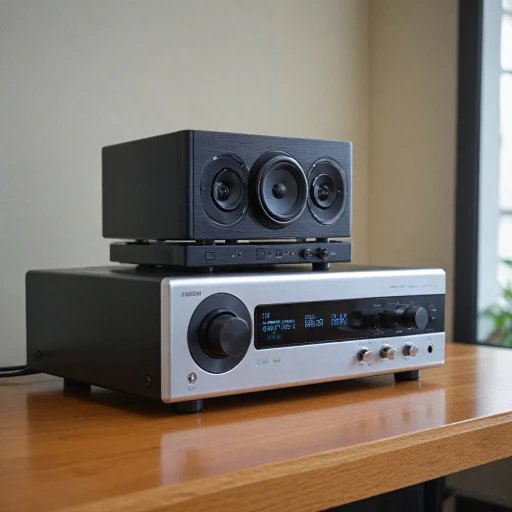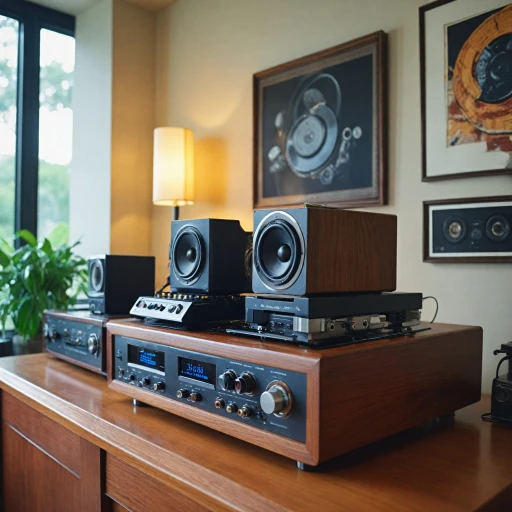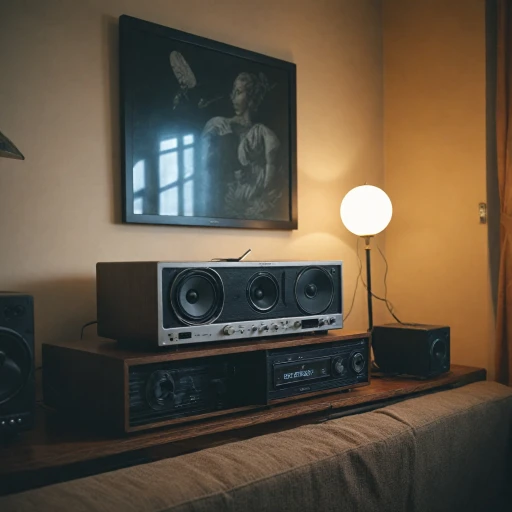Understanding Windows Sonic for Headphones
Decoding the Sound Revolution
Windows Sonic for Headphones marks a significant milestone in audio experience, heralding a shift from conventional stereo to an immersive spatial sound realm. With its introduction, users can redefine their auditory journey, especially when using noise canceling headphones. This virtual surround sound technology by Microsoft is crafted to emulate a 3D audio environment, making sounds appear to originate from precise locations around the listener. Perfect for video games, movies, and music, it offers a richer depth of soundstage, giving a new dimension to audio experiences. The system creates spatial audio by modifying the way sound waves reach the ears. This emulation closely mimics real-world sound dynamics, offering an engaging sensation of sound movement and separation. As a standout feature, Windows Sonic is more accessible than other spatial audio technologies like Dolby Atmos or DTS Headphone:X, making it a popular choice for many headphone users seeking better audio performance without additional costs. Despite being relatively new, Windows Sonic has gained substantial traction due to its seamless integration with Windows 10, Xbox consoles, and compatibility with various headsets. Users can easily enable Windows Sonic, enhancing their customary audio output to enjoy virtual surround sound on a range of compatible devices. This integration gives Microsoft a notable edge in the evolving sphere of spatial sound technology. For those exploring further, a headphone amplifier and DAC could amplify your immersive experience by refining the sound quality, offering more nuanced audio textures.Benefits of Using Windows Sonic with Noise Canceling Headphones
Elevating Sound Quality with Cutting-Edge Technology
When it comes to enhancing your audio experience, Windows Sonic for Headphones offers a unique advantage, especially when paired with noise-canceling headphones. This combination provides an immersive audio experience that sets it apart from traditional stereo sound. By implementing spatial audio technology, Windows Sonic creates a virtual surround sound environment that transforms your listening, whether you're gaming on your Xbox or streaming the latest blockbuster movie.Immersive Surround Sound for Enhanced Gaming
One of the standout benefits of using Windows Sonic with noise-canceling headphones is the way it elevates gaming experiences. This feature is especially beneficial for Xbox Series enthusiasts who rely on precise sound to gain a competitive edge. By offering a spatial awareness through sound placement that's typically found in high-end audio systems, players can better detect in-game events like approaching footsteps or ambient cues.Simulated Spatial Audio for Superior Engagement
Windows Sonic isn't just limited to improving gaming audio; it enhances movie and music listening too. With support for spatial sound, users can enjoy a heightened sense of realism similar to what Dolby Atmos delivers, without the need for specialized Dolby-equipped hardware. Movies and music become more engaging by transforming conventional stereo audio into a dimensional experience that wraps around the listener.Enhanced Audio Clarity and Comfort
When combining Windows Sonic with stereo headphones, users notice a significant difference in audio clarity and comfort. The technology delivers crisp and clear sound by improving the perception of audio in various environments, making even the simple act of listening to your favorite tunes a more enjoyable experience. This comfort extends to long listening sessions, reducing fatigue with balanced audio performance. Explore how you can enhance your listening experience further by personalizing aspects like headbands for maximum convenience and style.How to Enable Windows Sonic on Your Device
Activating Windows Sonic for an Immersive Audio Experience
To fully appreciate the transformative power of Windows Sonic, knowing how to enable it on your device is paramount. Successfully activating Windows Sonic can elevate your listening experience, whether you’re diving into the world of stereo headphones or using a high-end xbox series game headset.
Here’s a step-by-step guide to turn Windows Sonic on:
- First, make sure your headphones are connected to your device. Windows Sonic supports both wired and wireless models, so compatibility with various technologies like Dolby Atmos and DTS Headphone:X gives you options.
- On your Windows device, click the speaker icon located in the system tray on the bottom right corner of your screen.
- Next, select 'Spatial Sound' from the options that appear. You’ll find choices like Dolby Atmos, DTS, and Windows Sonic. For a quick starter, choose 'Windows Sonic for Headphones'.
- Once selected, the option will be enabled, initiating a virtual surround sound environment that enhances both music and video games with 3D spatial audio.
In a perfect sonic environment, troubleshooting occasionally becomes necessary to ensure optimal sound quality. Don’t fret if issues pop up, as resolving them often involves a few simple adjustments.
Comparing Windows Sonic to Other Spatial Audio Technologies
Evaluating Sonic Solutions: Windows Sonic Versus Competing Spatial Audio Technologies
When considering options for enhancing your audio experience, both Windows Sonic and Dolby Atmos immediately stand out. But how do they compare, especially in the context of noise canceling headphones? Windows Sonic provides a virtual surround experience, admirable in its ability to generate spatial sound in games and multimedia without complex settings. It's particularly beneficial for users on a budget because it's available for free on Windows and Xbox Series devices. By enabling Windows Sonic, you get support for spatial audio that envelops you in 3D sound. Dolby Atmos, on the other hand, offers a more refined sonic experience. Though it requires a licensing fee, it delivers a richer, more immersive soundscape, akin to being right in the middle of the action—ideal for avid gamers and cinephiles. Atmos headphones work exceptionally well when you want to maintain a connection with the content, especially in atmos-enabled video games and movies. DTS Headphone: X is another alternative in spatial audio technologies. It simulates a 12-channel surround sound experience over stereo headphones. The audio clarity makes it suitable for an array of content, from video games to watching movies. In essence, choosing between these technologies often depends on your specific needs and existing setup. For those looking for better sound without additional expenses, turning on Windows Sonic might suffice. However, if your aim is to achieve the highest quality surround sound, investing in Dolby Atmos or DTS might be your path. Consider your usage patterns, whether it's for gaming on Xbox, streaming movies, or just enjoying music—each has different strengths in delivering audio excellence.Common Issues and Troubleshooting Tips
Troubleshooting Audio Hiccups
When diving into the realm of Windows Sonic and other spatial audio technologies like Dolby Atmos and DTS Headphone:X, it’s natural to encounter a few quirks along the way. Here are some common issues one might face and a few troubleshooting tips to ensure your audio experience remains seamless.
Check Your Connections
First and foremost, ensure that your headphones or headset are properly connected to your device. A loose cable or unpaired wireless connection can disrupt the sound experience. For those using Xbox or Windows devices, double-check that your headset is correctly paired or plugged in.
Audio Settings Adjustment
Sometimes, the issue might reside within the audio settings. Make sure that you have enabled Windows Sonic or your preferred spatial audio setting in the sound settings of your device. Switching back and forth between stereo and surround sound can also sometimes "reset" any audio glitches.
Software and Driver Updates
Keeping your software updated is crucial. Check for any updates for the audio drivers on your Windows device. Microsoft frequently releases patches and updates that enhance or fix issues related to Windows Sonic and other audio technologies.
Compatibility Checks
Verify that your headphones are compatible with the spatial audio format you are attempting to use. Some older devices may not fully support latest technologies like Dolby Atmos or DTS headphone surround for an immersive audio experience. Be sure that your headset is compatible with your specific system and audio preferences.
Contact Support if Needed
If these steps don’t resolve the issues, consider reaching out to support. Whether it’s for your specific headphones or the Windows software, official support can provide tailored solutions.
Expert Recommendations for Best Headphones
Choosing the Best Noise-Canceling Headphones for Spatial Audio
When it comes to maximizing your audio experience with technologies like Windows Sonic, it's crucial to select a pair of noise-canceling headphones that can bring out the best in spatial sound. Here are some expert recommendations to help guide your decision:- Compatibility and Integration: Look for headphones that support multiple spatial audio formats such as Windows Sonic, Dolby Atmos, and DTS Headphone:X. Ensure they can be easily integrated with your existing devices, whether you're gaming on an Xbox Series or watching movies on your laptop.
- Active Noise Cancellation (ANC): Noise-canceling headphones with effective ANC technology can significantly enhance your spatial audio experience. By minimizing ambient sounds, you’ll enjoy clearer and more immersive surround sound.
- Comfort and Design: Since you might be wearing your headphones for extended periods while gaming or watching videos, comfort is key. Opt for ergonomic designs with soft ear cushions and adjustable headbands.
- Sound Quality: Prioritize headphones that offer a balanced audio profile. Look for models that provide a good balance between bass, mids, and treble to ensure all elements of the sound spectrum are well-represented.
- Connectivity Options: Having both wireless and wired options can offer flexibility. Bluetooth connections are convenient, but a wired connection may provide the best sound quality and ensure compatibility with various devices.
- Expert Reviews and Testing: Rely on expert reviews and tests to gauge the headphones' performance. This can give insight into real-world use of spatial audio technologies and how well they perform in different scenarios, like video games or movies.







